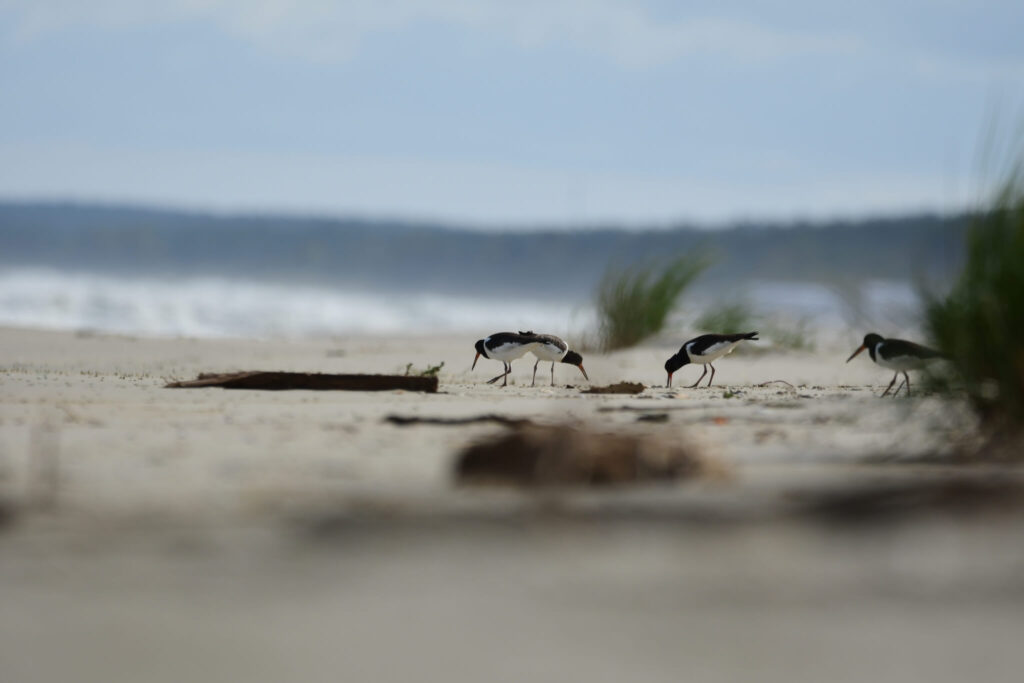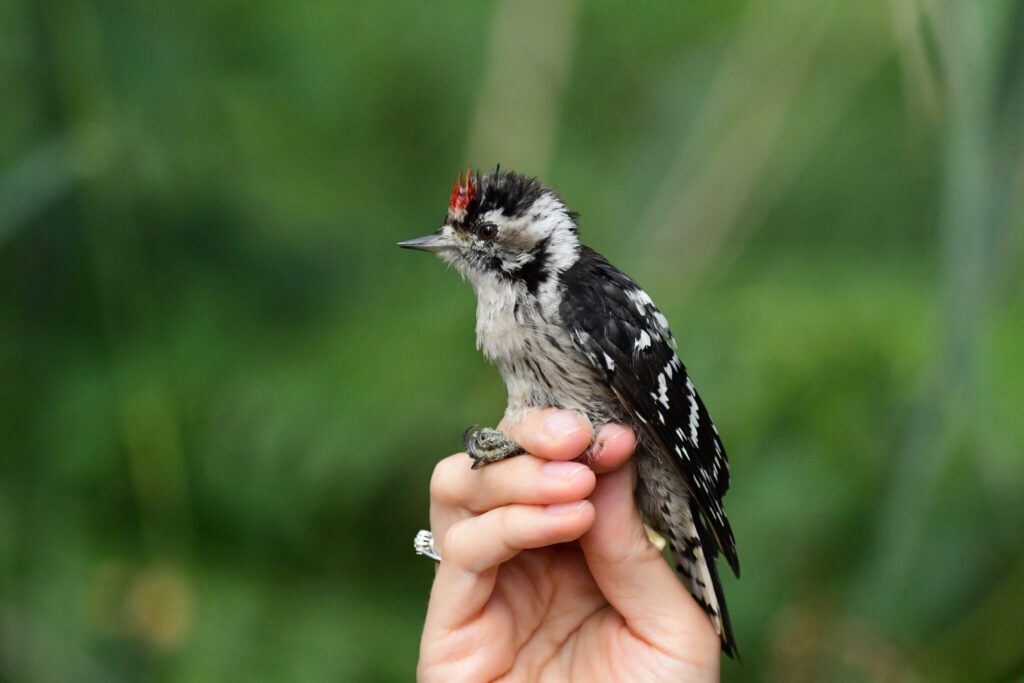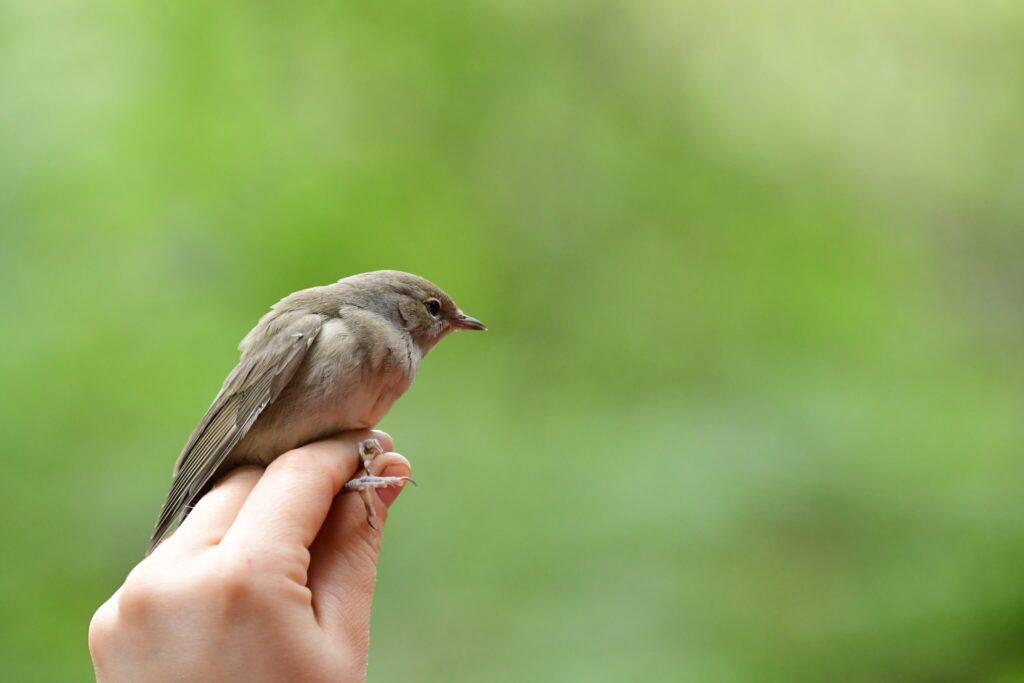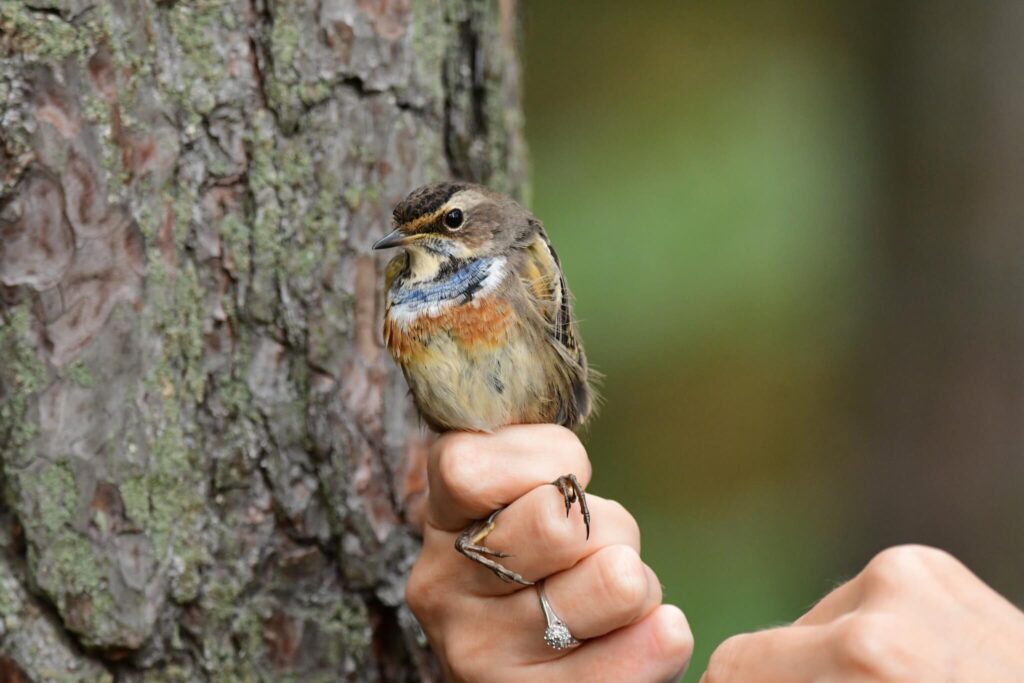When the spring edition of Operation Baltic became just a memory, I immediately started missing the specific atmosphere of this event, the people and birds who participated in it. My wife made the decision even easier – we were both going to Operation Baltic in the autumn! So we did, and now the time has come to draw conclusions. How do we remember the ornithological camp on the Vistula Spit? You’ll find out in a moment!

- Ornithological camp – Operation Baltic – Vistula Spit
- How does an ornithological camp operate?
- Krynica Morska – the bird El Dorado
- Personal list extended – what I manged to see at the Baltic Sea
- Why is it worth going to an ornithological camp?
- Can’t go, but want to help? No worries.
Ornithological camp – Operation Baltic – Vistula Spit
As a matter of fact, while I was returning from the ornithological camp in Hel in the spring, I already knew that this would not be my last adventure with bird ringing and the participants of Operation Baltic. I was prompted to make plans for the future by a very friendly atmosphere, lots of interesting people and birds, combined with even more opportunities to learn something new and have exciting encounters with wildlife. At that time, I did not realize that I would have the chance to go to an ornithological camp so soon.
My stories and photos from the spring trip made my wife jealous, so just a few months after returning from Operation Baltic I was on my way again. This time by car instead of train, and not alone 😉 Because the ornithological camp in Hel is closed during the autumn ringing, we went to the Vistula Spit, to Krynica Morska.

The road to the camp passed quite quickly and without any major events, although our old vehicle made us a little scared right after we left Lublin. In the end, we managed to successfully arrive at the camp and once we get to know the team on the first evening, we went for a romantic walk by the sea. Our tasks would begin on the next day.
How does an ornithological camp operate?
The ornithological camp on the Vistula Spit operates in the same way as the one on Hel. All camp participants are required to work together under the supervision of the manager, and their duties include:
- net inspections – every hour under normal conditions, every half an hour during rain, and every two hours at night
- ensuring that the camp and its surroundings are clean
- preparing firewood
- replenishing water from a local resident
- recording ringing measurements
- shopping trips
- other camp-related tasks
- obeying the manager 😛
The division of duties is established between the participants, so everyone can choose something they are good at. As you can imagine, there are times when everyone has something to do, especially during bird raids. On the other hand, moments of blissful boredom are not rare and can be used in an interesting way. I usually spent them with the camera in my hand.

Operation Baltic organizes its ornithological camp in tents set up in the forest for several weeks. But I would not say that the conditions there are harsh. A toilet changed every few days, thick and comfortable mattresses, a permanent roof, the ability to take a warm shower, a separate insulated place for preparing and eating meals… these are the comforts I miss when going into the woods with a backpack.
Remember, however, that the camp is in the forest, so we are guests there. So you should not be surprised by the presence of forest inhabitants, especially certain eight-legged creatures that like to hide under the tent flysheet 😉
Krynica Morska – the bird El Dorado
The location of the Operation Baltic camp near Krynica Morska is quite a treat for a birdwatcher from the south of Poland. I tried to spend all my free time looking for birds that I can only dream of in the Lublin region. Even on our way to the sea, I looked at the observations reported there by ornitho.pl to analyse my chances of meeting species that I had not seen yet. And there is no shortage of interesting species reported in the vicinity of Krynica Morska in September. So I dreamed of all the seedlings, dunlins, birds of prey, gulls, sparrows and some real rarities I could spot.

Unfortunately, this time I did not manage to meet a spectacular specimen like a red-flanked bluetail, which I was lucky enough to photograph in Hel. However, the great diversity offered by this place should be appreciated. When staying in the ornithological camp on the Vistula Spit, a bird lover has access to a large number of environments where they can observe various species of birds.
The ornithological camp is set up in the forest at the Vistula Lagoon, covered at this location by a very wide patch of reeds. Therefore, it is a perfect place to observe many species typical of this environment, such as reed warblers, sedge warblers, great reed warblers, common reed buntings, western marsh harriers, common snipes, bearded reedlings and others.
The forest surrounding the camp offers another range of interesting species. tits, woodpeckers, flycatchers, redstarts, wagtails, robins, common treecreepers and jays. This entire forest crowd that can be met every day also features the birds resting in the forest while returning from their breeding sites.

Unfortunately, this time I did not manage to meet a spectacular specimen like a red-flanked bluetail, which I was lucky enough to photograph in Hel. However, the great diversity offered by this place should be appreciated. When staying in the ornithological camp on the Vistula Spit, a bird lover has access to a large number of environments where they can observe various species of birds.
The ornithological camp is set up in the forest at the Vistula Lagoon, covered at this location by a very wide patch of reeds. Therefore, it is a perfect place to observe many species typical of this environment, such as reed warblers, sedge warblers, great reed warblers, common reed buntings, western marsh harriers, common snipes, bearded reedlings and others.
The forest surrounding the camp offers another range of interesting species. Tits, woodpeckers, flycatchers, redstarts, wagtails, robins, common treecreepers and jays. This entire forest crowd that can be met every day also features the birds resting in the forest while returning from their breeding sites.
Personal list extended – what I manged to see at the Baltic Sea
I began 2021 with 172 species on my list of birds photographed in Poland. My goal for this year is to reach 200 species, and it seemed to me that it would be difficult as I already have quite a lot of them on the list. This goal would probably be hard to achieve if it were not for two trips to Operation Baltic, where I could spot a few birds that do not appear around Lublin. During the spring ornithological camp in Hel, I was able to see and photograph as many as 9 new species (unfortunately I still have no photos of Eurasian woodcock, even though I saw it almost every day at that time).
When I left for the autumn event, I had already achieved my goal of 200 species, but I still wanted to find something new. It turned out that staying at the ringing camp almost guarantees a lot of new observations, because I returned from my autumn trip also with 9 new species of birds I have never photographed before. In this way, I managed to add to my list the herring gull, a species very common in Pomerania.

The common, but hidden and difficult-to-identify warbler, as well as rare bluethroat and collared flycatcher were caught in the nets. I missed the chance to photo the 10th species: when a red-breasted flycatcher got into the net, I was hunting for dunlins with my camera.



On the beach itself, I came across species like Caspian tern, sandwich tern, sanderling, red knot and bar-tailed godwit, and I will remember the meeting with the last one very fondly and for a very long time.





I came home with a great result (compared to my goal for the year) of 213 species photographed in Poland! And by the end of the year there will definitely be some more opportunities to spot something new!
A full gallery of birds I’ve photographed in Poland and abroad can be found here: Birds – documented sightings.
Why is it worth going to an ornithological camp?
There are many reasons to take part in an ornithological camp. First of all, the participants are volunteers, and everybody knows that by helping others you help yourself. This is a really simple and fun way to do something useful, and unless you’re a researcher, you probably don’t have an actual impact on science very often. The ornithological camp gives you such an opportunity, and while your contribution might not be enormous, it is a small piece thanks to which we can get to know our winged friends better and protect them.
Participation in bird ringing is also great if you wish to learn and really get in close contact with birds instead of merely watching them from a distance. Bird ringers are passionate people full of expertise, so they pass on knowledge in an interesting way.

Another huge advantage is other volunteers. While ringing the birds you can meet some very fascinating people, each with interesting reasons for being at the camp. So if you are not afraid of volunteering and a bit of inconvenience, a trip to Operation Baltic and other ringing camps can be your dream adventure.
So if you rarely have an opportunity to admire the Polish sea, encounter interesting birds, meet interesting people and experience exciting adventures, an ornithological camp is a great option for you. See for yourself.
Can’t go, but want to help? No worries.
Do you want to help collect data that allows us to learn about changes in bird migrations, but you can’t go to an ornithological camp? You can give a donation to Operation Baltic, which gathers funds for research and education, or buy something in the special store – https://www.facebook.com/sklepikzrudzikiem.
Either way is good, all you need is a bit of willingness!

That’s awesome Paweł! It was such a great experience, thanks for sharing!